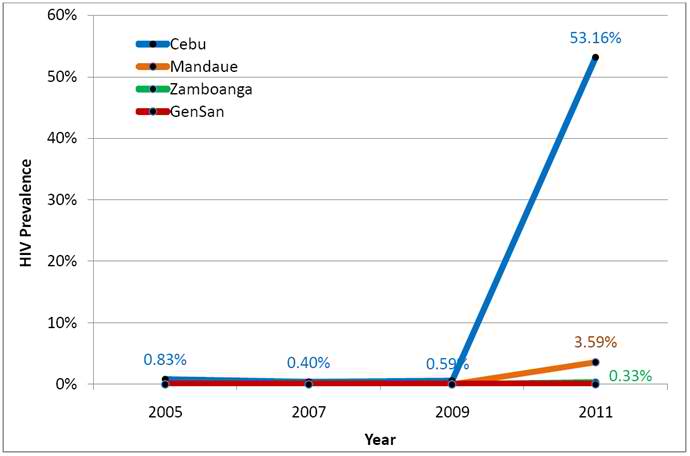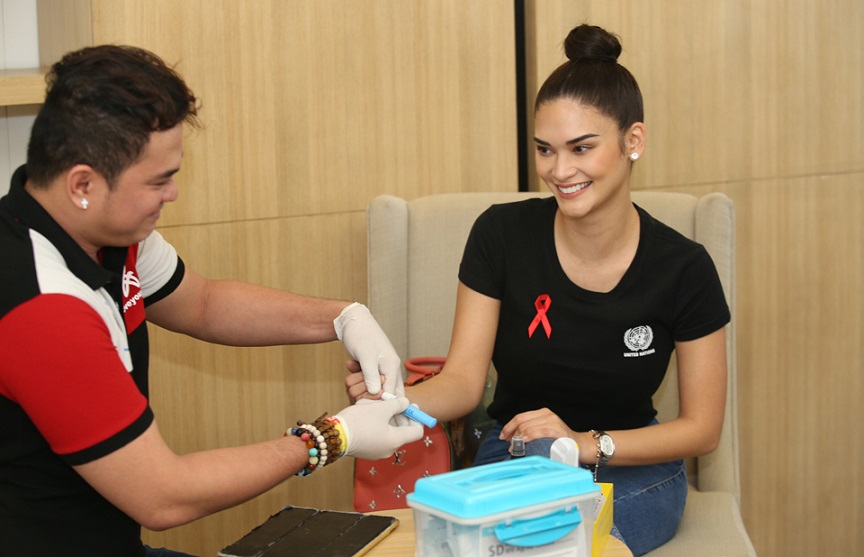By IBARRA C. MATEO
 A RARE case of a Filipino male, who tested HIV positive 10 years ago in France and was found HIV negative in his most recent testing in the Philippines this year, has puzzled the medical community and the Department of Health.
A RARE case of a Filipino male, who tested HIV positive 10 years ago in France and was found HIV negative in his most recent testing in the Philippines this year, has puzzled the medical community and the Department of Health.
Dr. Enrique A. Tayag, director of the DOH’s National Epidemiology Center, said they view the case of the patient, whom he identified only as “Jed,” as “an isolated case, sort of a medical puzzle.”
Tayag said in a telephone interview that it was the patient himself who told him that the result of his latest HIV test was “negative.”
Tayag, who is also San Lazaro Hospital medical director, refused to make categorical statements on Jed’s case. He just said,“What is evolving is that he used to be HIV+ who became HIV-.”
“Jed’s case is still puzzling us,” he said. “I hope we can have the answer.”
Tayag said this unusual case involving a Filipino HIV-positive patient who eventually became HIV negative is not something that one can look forward to in the future because “it is not going to be the regular case.”
Tayag said, “We are undergoing a process and looking at the situation of Jed now. He has visited our doctors several times. I cannot divulge other details, except that he had HIV tests.”
He added that Jed is undergoing other tests, the results of which he cannot yet interpret because he still has to talk to the patient’s attending physicians.
Jed was repatriated by the French government to the Philippines in 1998 after he tested positive for HIV. Since then, he has had three other HIV tests in the Philippines: at San Lazaro Hospital, in an unnamed private health facility, and at the San Lazaro Hospital again this year.
No details were made available because of the patient confidentiality clause.
“If the result of his latest HIV test would confirm that he has become HIV negative, it has many interpretations,” Tayag said. “It could be interpreted that the HIV has become dormant. It also means that he still has the HIV.”
Tayag said the DOH does not want to give the impression that Jed has been “cured” of HIV because no cure has been found yet for HIV.
He said, “We are analyzing his other tests. I am just telling you some of the possible explanations of his case.”
The San Lazaro Hospital medical director said if Jed’s doctors would confirm and declare that he has become HIV negative, “Jed will become the first Filipino who is HIV positive and now is HIV negative.”
Malaysia, China and Britain have reported cases similar to Jed, Tayag said.
He repeatedly said the DOH cannot categorically declare at the moment that Jed is now HIV negative, or if he will still be categorized as “a person living with HIV.”
He said he has notified the World Health Organization about the developments in Jed’s unusual HIV case and added the DOH will share laboratory tests results with the world body to enable them to jointly assess the case.
He said the DOH will have to write a report analyzing Jed’s treatment protocol, especially the medicines and ART he received.
There is no known cure yet for this dreaded disease, but a cocktail of antiretroviral therapy (ART) is given to HIV-positive people to arrest the progression of HIV infection into full-blown acquired immune deficiency syndrome (AIDS).
The WHO has reported that as of December 2009, about 5.25 million people in low- and middle-income countries are being administered the ART.
Tayag said, “Our message stays the same. We have to prevent HIV infection. HIV infection has complications as it progresses. It is still a public health threat. There is no room for complacency.”
The Philippines recorded 5,307 HIV infections, 860 AIDS cases and 323 deaths related to AIDS from January 1984 to January 2011. Of the total HIV infections, 1,258 cases were those of young Filipinos in the 15-24 age group and 55 cases of children below 15 years old.
Since the beginning of the epidemic, more than 60 million people have been infected with the HIV virus and nearly 30 million people have died of AIDS, according to WHO estimates.
Photo by Yahoo





